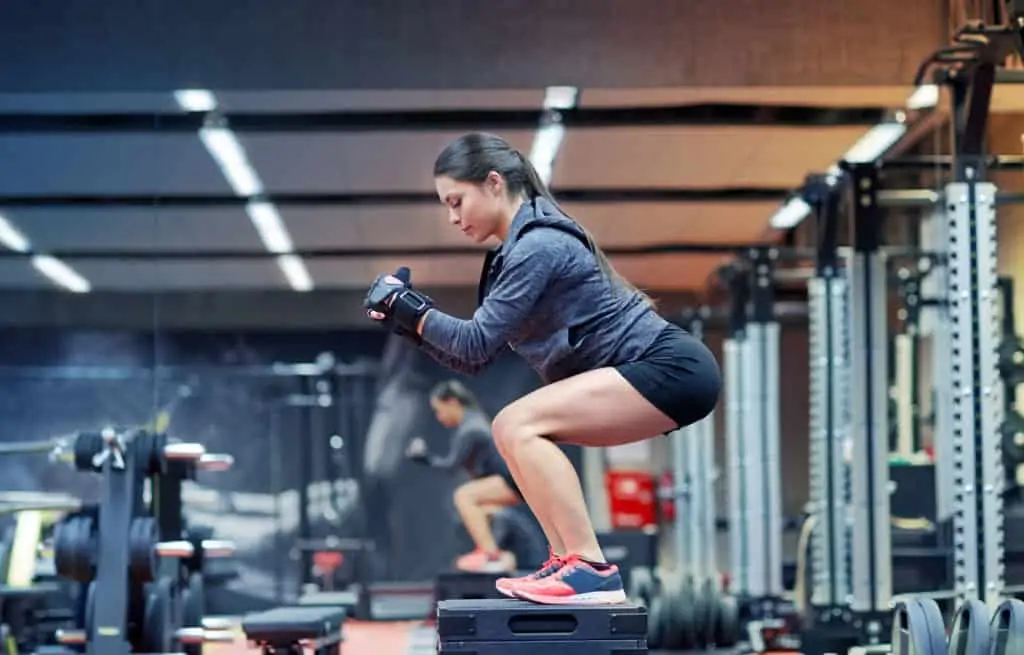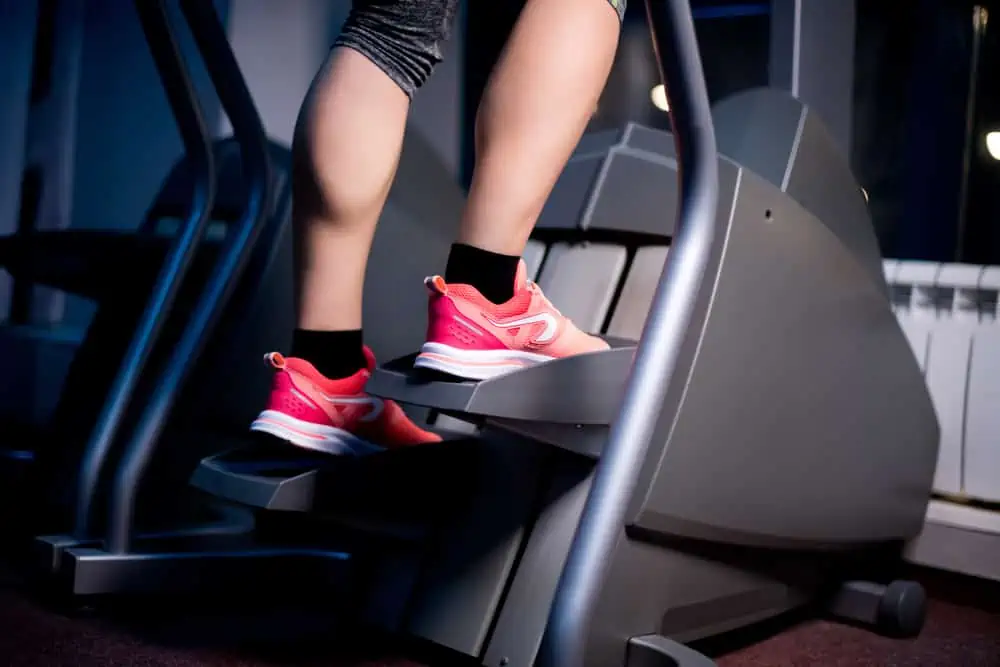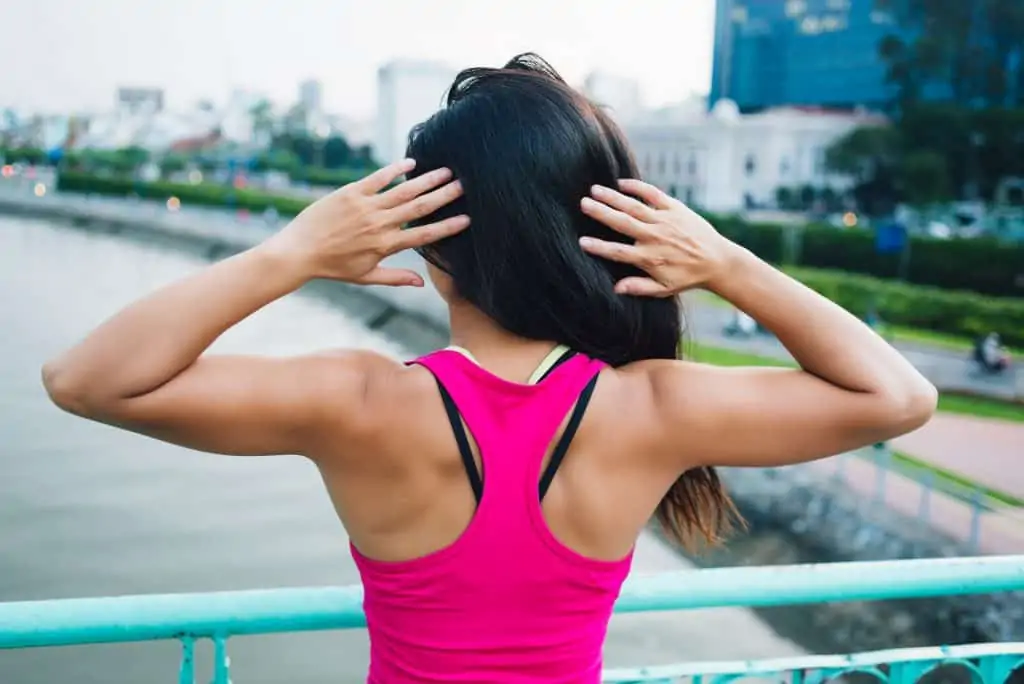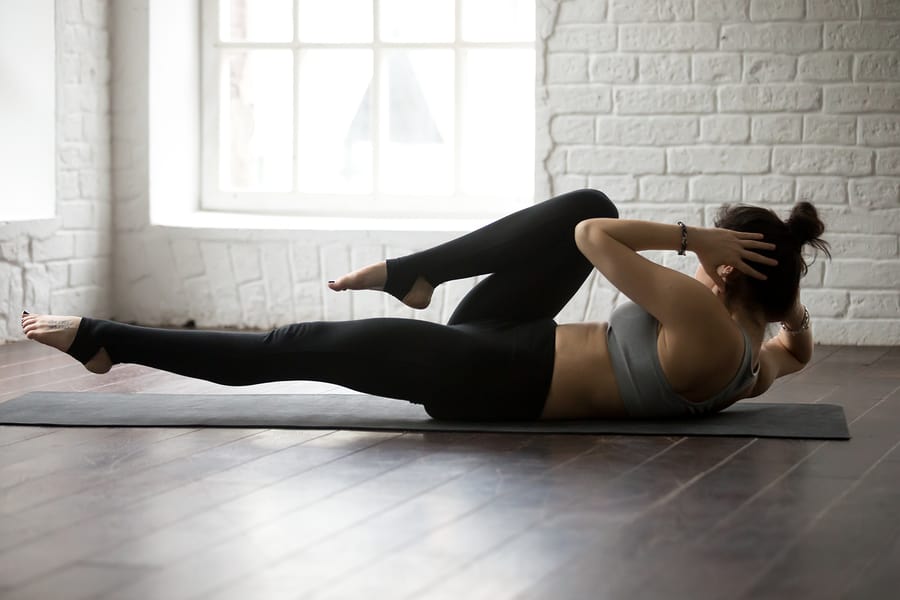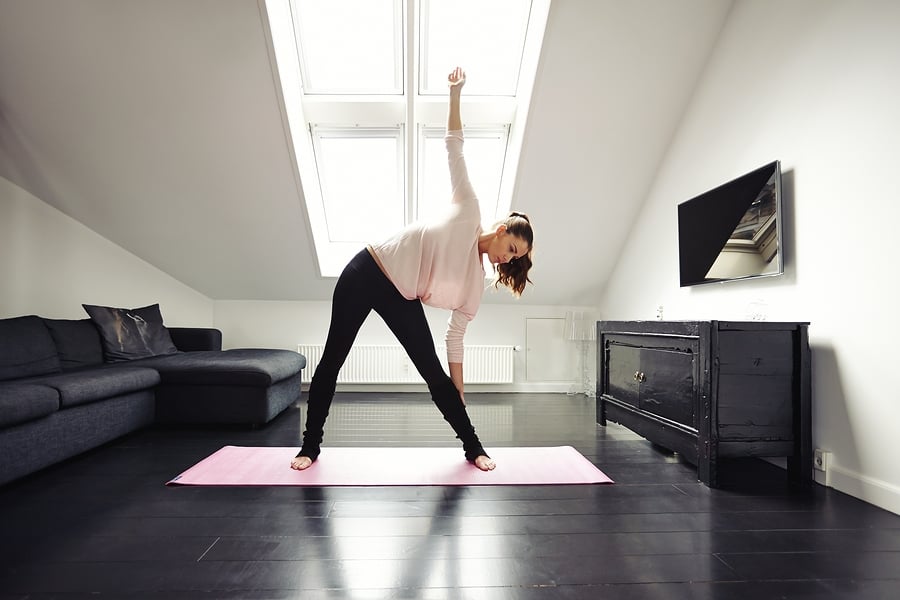This post may contain affiliate links. If you click through a link and make a purchase, I may receive a commission at no additional cost to you. As an Amazon Associate, I earn from qualifying purchases. Read the full disclosure here.
How well do you know the anatomy of lower body muscles for exercise?
Chances are you’ve heard some names in passing, but are you confident you know their functions?
Successful strength training requires an understanding of how your muscles work during each leg exercise and is crucial for preventing injuries. To truly improve muscle strength, you need to build a mind-body-movement connection.
After reading this article, you’ll be able to put a face to a name for lower body strength exercises and rock your next leg workout, even if you’re a total beginner!
PS – Don’t forget to check out my YouTube channel here, where you can find body part focused flexibility and yoga classes. See you there!
Disclaimer: This content is for educational purposes and is not medical advice. Read the full disclaimer.
Calf muscles
Gastrocnemius (aka gastroc for short) and soleus. Technically there’s another smaller muscle in there too called plantaris, but the major players are gastroc and soleus. The gastroc is the more visible of the two, making up that rounded look when you rise up on your toes.
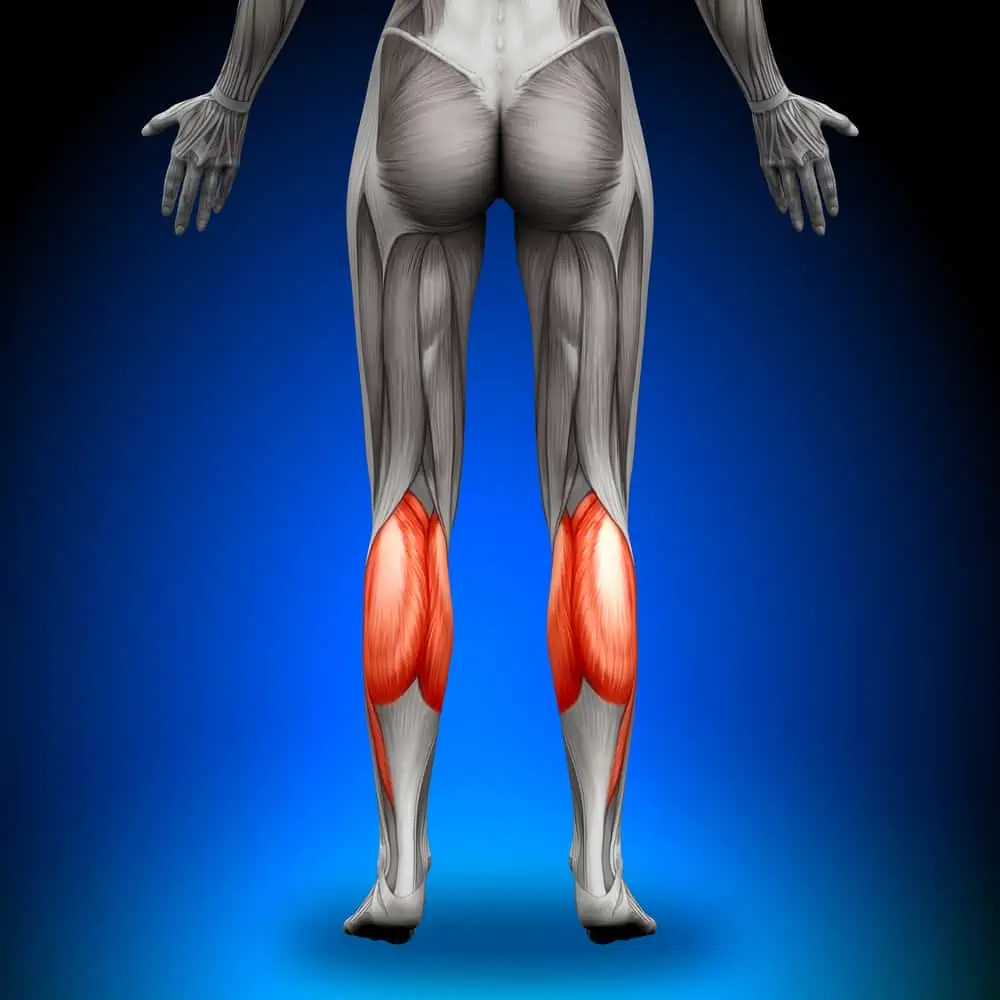
Where are the calf muscles located?
The back of the lower leg. The gastroc muscle crosses the knee joint, which is essential to note for optimal stretching and strengthening positions.
Beneath the gastroc is the soleus. Together these muscles fuse into thick fascia that becomes the Achilles tendon, ultimately attaching at the back of the heel.
Related read: Achilles Tendonitis vs. Plantar Fasciitis – What’s The Difference?
Function of the calf muscles
To plantar flex (point) the foot and rise up on your toes. The gastroc assists with running and jumping as well as pushing off when you’re walking.
These muscles also help with the first line of defense in keeping your balance during small postural sways.
Tight calf muscles are sometimes found in people with plantar fasciitis.
Related read: Why Does My Achilles Tendon Feel Tight? (14 Causes)
Calf muscle stretches
- Downward dog
- Stretching the heel off the back of a step
- Wedge board for calf stretching
Visit the foot/ankle flexibility library for a step by step guide.
Related reads: How To Stretch Tight Calves & Why Does My Achilles Always Feel Tight? (14 Potential Causes)
Calf muscle strengthening examples
- Heel raises
- Seated calf raises
- Standing balance activities
Quadriceps
The quadriceps group is made up of four muscles. These are rectus femoris, vastus lateralis, vastus medialis, and vastus intermedius.
Where are the calf muscles located?
The quads are found on the front aspect of the thigh between the hip and knee, attaching below the patella (knee cap) on the lower leg.

Rectus femoris is the only quad muscle that crosses the hip joint and attaches to the pelvis. The patella is embedded within the quad tendon, acting as a fulcrum to provide the quads with more leverage to produce strength.
What do the quad muscles do?
This large muscle group performs many functions.
If you’re sitting, it’s responsible for extending the knee. During more dynamic movement, the quads help perform squatting activities including getting up and down from a chair.
Because the rectus femoris crosses the hip joint, it has a small role in flexion of the hip.
Related read: Kinesiology Taping For Patellofemoral Syndrome
Quad muscle stretches
- Standing quad stretch
- Prone quad stretch
- Sidelying quad stretch
- Kneeling quad stretch
The standard quad stretch involves bringing the heel toward the gluts with either a hand or strap, making sure to keep the knees in line and pelvis neutral.
A common mistake is allowing the knee to drift out to the side. So check your form!
Check out the knee flexibility exercise library for more quad stretch variations.

Quad muscle strengthening exercises
- Squat
- Lunge
- Step-ups
- Leg press weight machine
- Leg extension machine
These are just some basic examples, there are many options available to strengthen the quads.
Too much to think about? No prob! Check out the Aaptiv fitness app for a personal trainer like experience on the go and start adding these exercises and stretches into your routine.
Grab a 30 Day Free Trial of Aaptiv.
Hamstrings
The hamstrings are made up of 3 muscles; biceps femoris, semimembranosus, and semitendinosus.
Where are the hamstrings located?
The back of the thigh from the sits bones to the top of the lower leg, crossing the knee joint.
From behind, biceps femoris is on the lateral (outer) side, and the semimembranosus/semitendinosus are on the medial side (inside).
What do the hamstrings do?
The main functions of the hamstrings are to flex (bend) the knee and extend the hip.
They also stabilize the knee during standing activities. When walking, the hamstrings control the extension of the knee eccentrically.
Related Read: Yoga for Hamstrings – Easy Ways to Protect & Prevent Injury if you feel like your hamstrings are always tight.
Hamstring stretch examples
- Downward dog
- Pyramid pose
- Seated forward fold
- Supine hamstring stretch with a strap
See step by step hamstring stretches here.
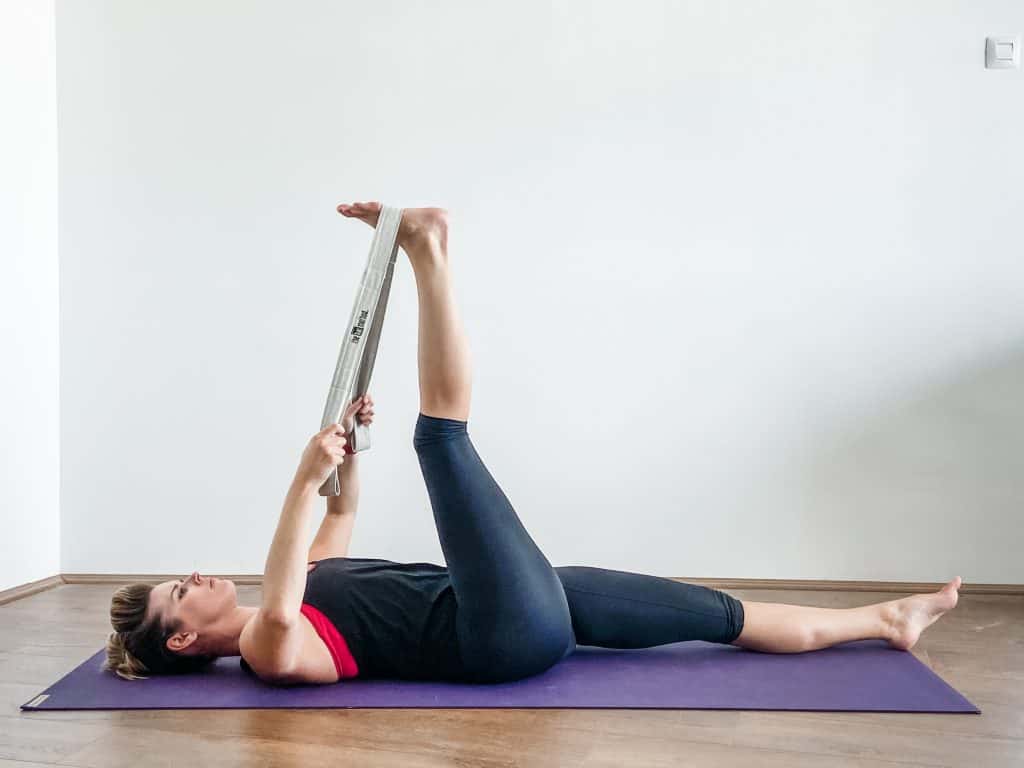
Hamstring strengthening examples
- Prone hamstring curls (leg curl)
- Ball bridge with hamstring curl
- Deadlift
- Nordic hamstring curl
Hip muscle anatomy
At the crossroads of the lower extremity and the spine, the hip provides a central point of both mobility and stability.
Over 20 different muscles cross the hip joint to provide valuable three-dimensional movement.
Because of this, many muscles perform multiple functions depending on where a limb is in space. So while they may perform one main function, they can assist with other motions or with stability during that motion.
So a busy multi-muscle intersection, what could go wrong!
Gluteal muscles (glutes)
The glutes are made of several muscles.
They’re known officially as gluteus maximus (glut max), gluteus medius (glut med), and gluteus minimus (glut min).
As advertised, their Latin language-based titles suggest the size of each muscle.
Where are the glutes located?
For lack of a better word, this is your butt. Glute max makes up the rounded backside look, glute med and min are situated somewhat underneath glute max.

What do the glutes do?
Glute max is one of the largest and most powerful muscles in the body.
The primary function acting on the lower body is to extend and externally rotate the hip. The lateral side of the muscle inserts with the IT band, contributing to lateral stability at the hip and knee.
Another essential function is to support the lumbar spine. Glute weakness is a common finding in chronic low back pain.
Everyday activities requiring glute strength include getting in and out of a chair and climbing stairs. If the glutes are weak, the body will overwork other muscles in that area to accomplish the task. Hello, low back pain.
Related read: 6 Things To Avoid With Hip Bursitis
Glute stretch examples
- Figure 4 stretch
- Pigeon pose
See more glute stretches step by step!
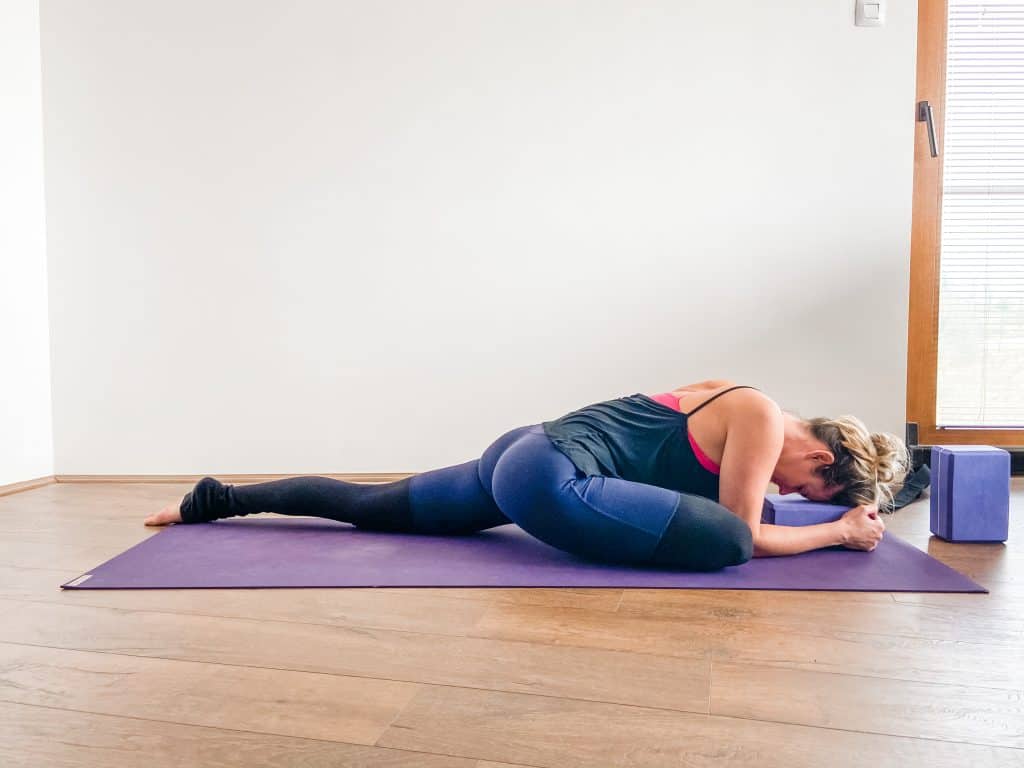
Glute strengthening exercises
You’re probably starting to notice some of these exercises target multiple areas and can give you a lot of bang for your buck.
- Wide squat
- Lunge
- Step-ups
- Bridge
- Hip Thrust/barbell thrust
- Kettlebell swing
- Donkey Kick
- Fire hydrant
- Cable machine hip extension
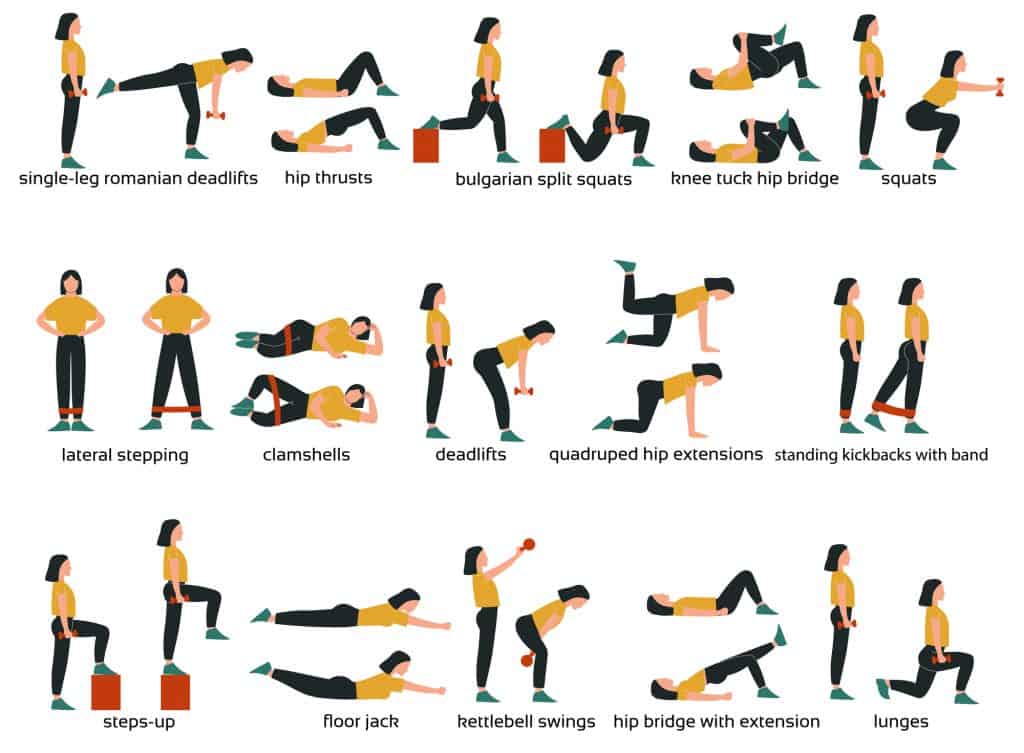
Hip abductors
This group is made up of several muscles including glut med, glut min, and tensor fascia latae (TFL) which attaches into the IT band.
Where are the hip abductors located?
The hip abductors surround the lateral (side) of the hip.
Function of the hip abductors
This group of muscles helps keep the pelvis level during standing activities as well as move the leg laterally (out to the side).
There are several muscles involved in abduction, glut med is the strongest of the abductors. Weakness in the hip abductors can contribute to other issues further down the leg. They help with overall stability.
Hip abductor stretches
Due to anatomy, some muscles are difficult to isolate.
To stretch the muscles that abduct the hip, there is often a rotational component such as the figure 4 stretch.
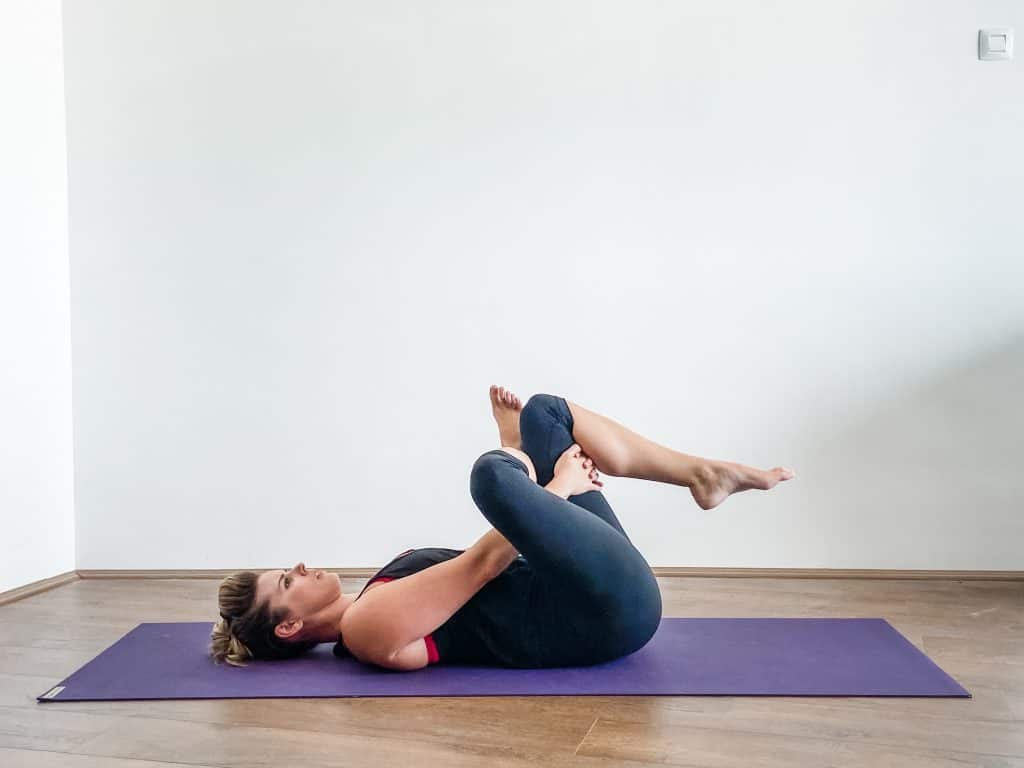
Supine twist, standing side bend stretch, and quadruped side bending stretch are other examples.
See more hip stretches step by step!
Hip abductor strengthening exercises
- Side stepping with a resistance band
- Clam shells
- Skaters
- Hip dips
- Side-lying leg lifts
Hip flexors
Psoas major, iliacus, rectus femoris, sartorius, pectineus. The psoas major, often referred to as just the psoas (pronounced: SO-as), has made its way to the mainstream.
Related read: What Causes Tight Hip Flexors? & How To Fix
Where are the hip flexors located?
The psoas is a large muscle (one on each side of the lumbar spine) that attaches to the side of the lumbar vertebrae on the front side, so think behind all your internal organs. Iliacus joins in from the inner side of the pelvis.

What do the hip flexors do?
The function of the hip flexor group is just like it sounds, to flex the hip and draw the knee closer to the chest.
They also help with putting one foot in front of the other while walking.
But the psoas does so much more than that.
Pso-as I was saying…because of its anatomy and deep connection to the lumbar spine, psoas is like the unsung hero of core stability.
Sedentary jobs are commonplace nowadays, and prolonged sitting can cause the psoas to become “tight”, tugging on the lumbar spine and tilting the pelvis forward. The confusing part is that it doesn’t necessarily mean it needs to be stretched!
That sounds like crazy talk, I know.
In short, a “tight” muscle can also be a weak or overworked muscle, setting off a complex imbalance leading to all sorts of assorted back pain, hip pain, and more.
Best to visit a skilled physical therapist and get evaluated to determine what your psoas and company need.
Related Read: 7 Best Foam Roller Exercises to Combat Poor Desk Posture
Hip flexor stretches
- Kneeling psoas stretch
- The back leg of pigeon pose
- Supine knee to chest (the opposite leg gets the stretch)
View more hip flexor stretches here.
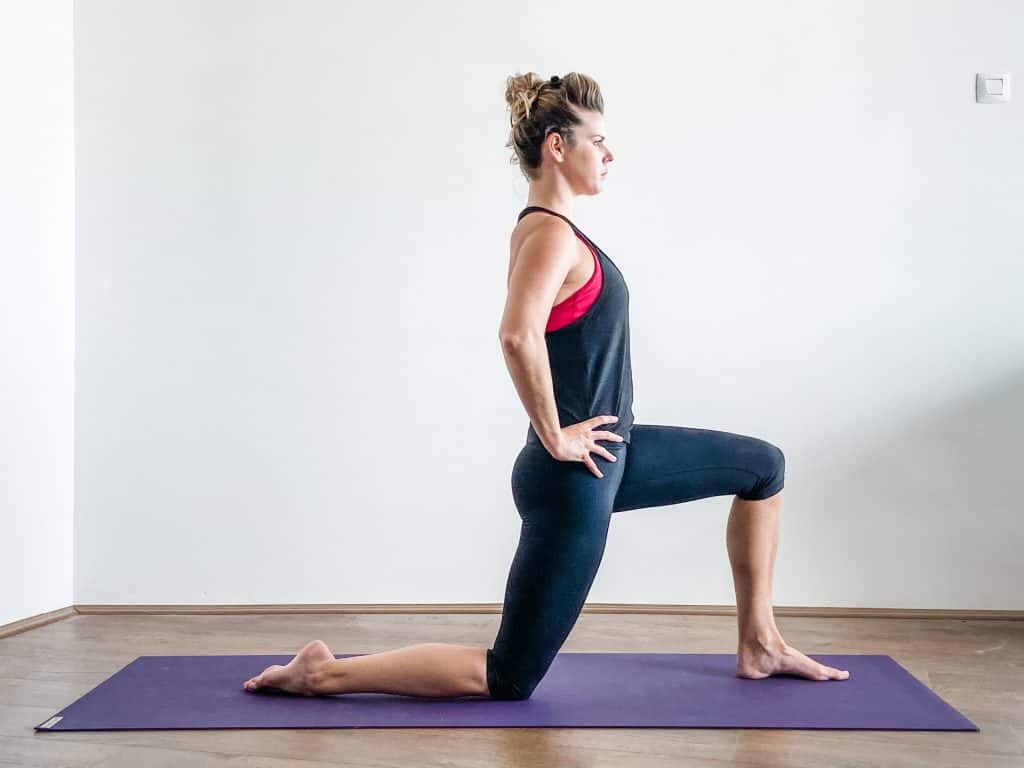
Hip flexor strengthening exercises
- Marching with a resistance band around the knees
- Mountain climbers
- Straight leg raise
All while maintaining a stable core, of course.
Hip external rotators
There are many small muscles involved in external hip rotation. For general exercise information purposes, it’s not necessary to know them individually, just what they do as a group.
Piriformis is one of them which has become more common to hear about in recent years.
In case you really wanted to know, the following muscles can perform external rotation:
- piriformis
- inferior gemellus
- obturator internus
- superior gemellus
- obturator externus
- quadratus femoris
- glute max
- glute med
- glute min
- sartorius
They work together, so it’s impossible to say I think I’ll work my inferior gemellus today.
Where are the hip external rotators located?
Deep in the backside of the hip underneath the gluts between the sacrum and the back of the femur (thigh bone).
Function of the hip external rotators
This group of muscles function to rotate the hip externally, which is the motion you perform when you cross one ankle over the opposite knee.
During standing activities, they provide valuable stability to the hip joint.
Hip rotator stretches
- Figure 4 stretch
- Pigeon pose
- Hurdler Stretch
- Supine knee to the opposite shoulder
- Seated twist
- Cow face pose
- Firelog pose
See more examples of hip rotator stretches here.
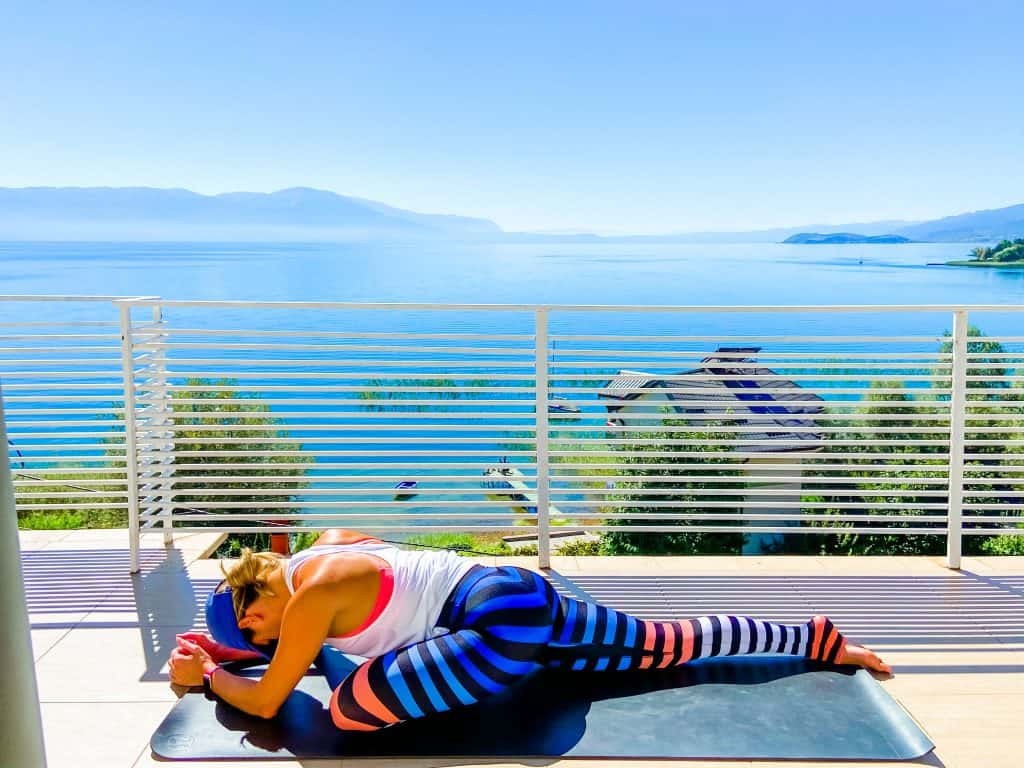
Hip rotator strengthening exercises
- Clam shells with resistance bands
- Fire hydrants
There are also muscles that assist the hip with internal rotation, which function to rotate the hip in the opposite direction.
This muscle group is not often mentioned in fitness; however, they do contribute to the overall stability of the hip.
These muscles include the TFL (tensor fascia latae), portions of glut med and glut min, adductor longus, brevis, and magnus, as well as pectineus. These muscles all perform other functions, but due to their anatomy, assist with internal rotation.
Adductors
Adductor magnus, adductor longus, adductor brevis, pectineus, gracilis.
Where are the adductors located?
Made famous by the thigh master, these muscles make up what we think of as the inner thighs and groin muscles.
Function of the adductors
The adductors function to move the leg toward the midline of the body and play a critical role in the stability of the hip joint.
Luckily, we now know you can’t thigh master your way to slim legs.
Adductor stretches
- Seated butterfly stretch
- Cobbler’s pose
- Standing side lunge
- Straddle stretch
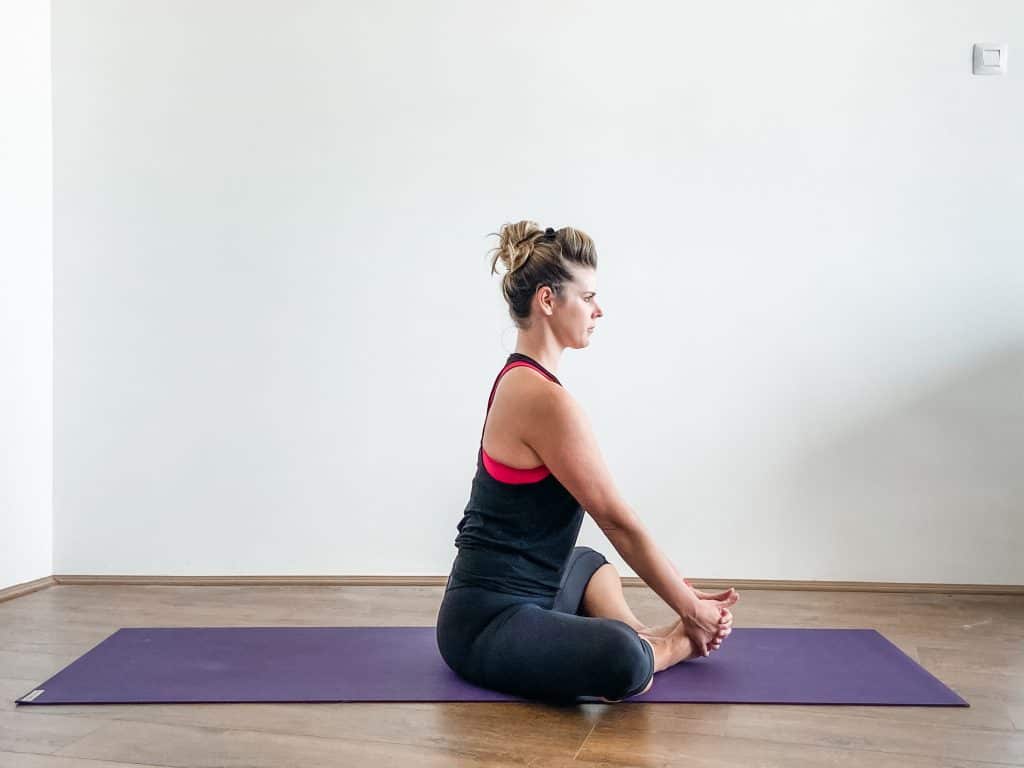
Adductor strengthening exercises
- Squats
- Lunges
- Skaters
- Bridging with a ball squeezed between the knees
- Side plank
More anatomy for exercise resources
- Exercise Library
- The Skinny On Core Stretch | Anatomy for Exercise
- Keys to Maintain Healthy Shoulders
- Exercise Modifications: Strategies to Work With Your Body
Wrapping up lower body muscles
I hope you have a whole new appreciation for how much hard work your body does behind the scenes.
Understanding how our bodies work to produce movements can help you get more out of your workouts and potentially avoid injury.
Use this guide to lower body muscles to plan your next workout, put your mind to the muscle, and start getting results!
Featured image credit: Copyright Pixelrockstar
References
Neumann, DA (2010). Kinesiology of the Hip: A Focus on Muscular Actions. JOSPT 40(2):82-94.
Strengthening Your Hip: Some Exercises May Be Better Than Others. JOSPT Perspectives for Patients. 2013; 43(2):65. Doi:10.2519/jospt.2013.0501
Neumann, DA (2003). Kinesiology of the Musculoskeletal System: Foundations for Physical Rehabilitation. St. Louis, MO: Mosby.
Netter FH (2003). Atlas of Human Anatomy. Third Edition. Teterboro, NJ: Icon Learning Systems.

